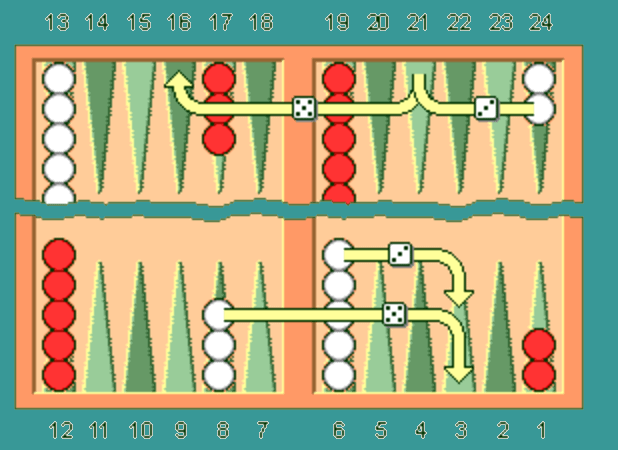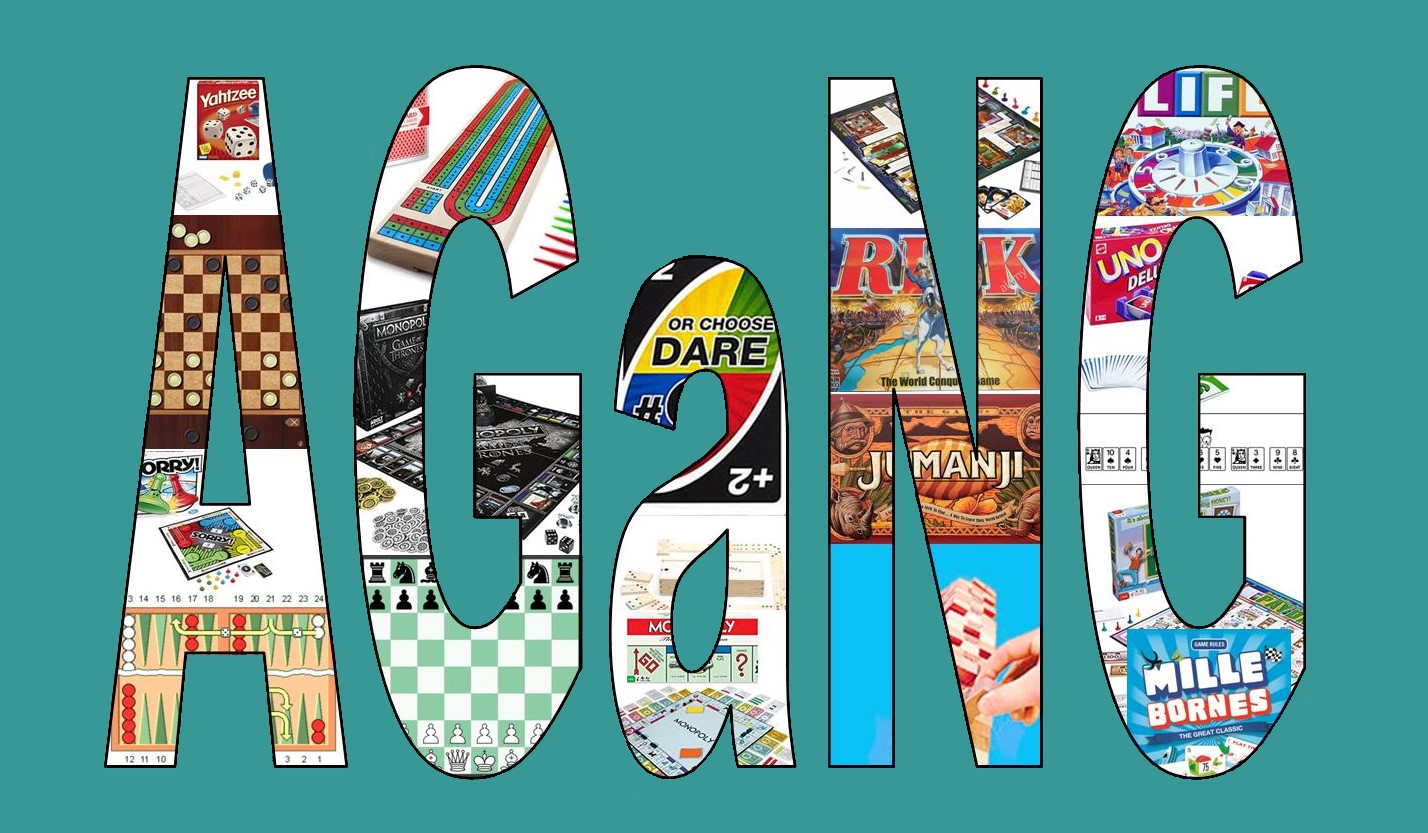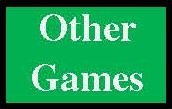Backgammon

Contents
The Backgammon game usually comes in an easily transportable case resembling a small suitcase. The lining of the suitcase serves as the game board and the inside contents include 30 checker pieces, 2 sets of dice, and 2 shakers.
The Set-up
There are 24 triangles on the board known as points. The checkers are color coded, 15 of one color and 15 of another. Each player will set their board according to the diagram below Two pieces will go on the 24th point, five on the 13th point, three on the 8th point, and five on the 6th point. This is the starting setup of the game, and players will strive to move all their pieces to their home board then successfully bare all their pieces off the board. A strong strategy is to try and hit as many of your opponents unprotected playing piece, known as “blots”, along the way.
How to start
To start both players will roll one die, the player that rolled the higher die goes first. Usually you will roll two dice but since each player rolled one die each, the player with the higher roll will move first based off the die that they rolled and the die the opponent rolled. From there players alternate turns accordingly.
Moving your pieces
You are always moving your pieces towards your home board. The checkers can move only to an open point, meaning that the point is NOT occupied by TWO or more of your opponents pieces. If the point has only ONE of your opponents pieces, you are encouraged to move your checker there in order ”hit” your opponent. More on this under the section titled “Hitting a piece”
After rolling your dice, you have two choices as to how you move your checkers. You can move one checker the equivalent of the first die and a second checker the equivalent of a second die, or you can move one checker the equivalent of both die added together, but you can only do the latter if the count of the first die moves the checker to an open point. You can stack as many of your personal checkers on any one point.
Doubles: If you roll doubles you get to move double the amount. For example. if you roll double 2’s you get to move a total of four 2’s in any format you’d like. So essentially instead of moving 2 pieces 2 space each you get to move 4 pieces 2 spaces each. You must move the full count of the roll, if possible. If you cannot move you lose your turn.
Hitting a piece:
If you can land on a point that has only ONE of your opponents pieces, known as a ”blot” then you can hit your opponent and move their piece to the bar. The bar is the middle crease of the board, where it folds in half. You can hit more than one of your opponents pieces in a turn. Now the opponent with the piece on the bar cannot make any other move until their pieces are off of the bar. They must re-enter the board on their opponents home board. When re-entering the game from the bar, you can use your whole turn. Meaning, if you roll a 3-4 you can re-enter on the 3 or 4 point and then move your checker according to the remaining die, as you would on a normal turn. You can hit an opponents piece on the home board or the outer board.
Bearing off:
All 15 piece must be on the home board before you can begin bearing off. To bear off you roll the dice and remove the associated checkers. For example if you roll a 6 & 5 you can remove one checker from the 6 point and one from the 5 point. Now, if you roll a die that is higher than where your checker is on the board, i.e. you roll a 6 but highest checker is on point 5, you can remove a checker from the highest point, so from the 5th point. The dice has to be higher than the highest point in order to do this. Meaning if the lowest point your checker is on is the 3rd point and you roll a 2 you cannot remove a checker from the 3, however you can move a checker on the home board just as you would on a normal move.
Winning:
The player that successfully removes all of their checkers from the home board first wins the game! If you are able to remove all 15 of your checkers before your opponent as borne off any of theirs then it is considered a gammon and the win is worth two points as opposed to one. If you are able to bear off all 15 of your checkers before your opponent has the chance to bear any of theirs, and your opponent still has a checker on your home board then the win is considered a backgammon and is worth 3 points!
The Doubling Cube:
These days, most backgammon sets come with a doubling cube. This cube is mostly used in competitions and not an essential component of the game, however, it does add an element of excitement on any level. The cube is used to double the stakes of the game and is marked with the numbers 2,4,8,16,32 and 64. If you decided to play with the doubling cube, you will start the game off at one point. If at some point in the game one of the opponents feels they have an advantage to win, they can pull out the doubling cube and double the points of the game from one to two. The opposing player can either accept the challenge by picking up the cube and placing it on their side of the board, or they can concede the game right then and there and choose to lose one point instead of two.
If the opponent accepts the challenge the player that accepted now has the option to double the game once again if the tide turns in their favorite raising the stakes from two points to four. Now the opposing opponent can accept or concede and if they conceded they give up two points as opposed to one.
Arizona Gay Nude Games









